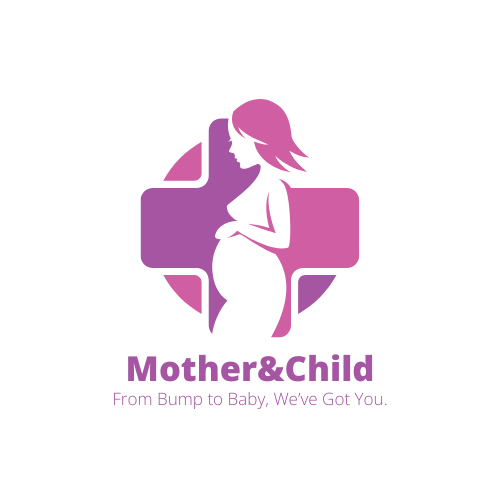🎯 Learning Objective:
To explain how blood type incompatibility between a mother and her baby—especially ABO or Rh differences—can cause severe jaundice in newborns, particularly when not diagnosed early in African settings.
🧬 What is Blood Type Incompatibility?
Every person has a blood group (A, B, AB, or O) and an Rh factor (positive [+] or negative [−]).
Sometimes, the mother’s immune system attacks the baby’s red blood cells if their blood types are not compatible.
This breakdown of red cells causes a surge of bilirubin, overwhelming the baby’s immature liver, leading to early and dangerous jaundice.
🅰️ ABO Incompatibility
🔍 What is it?
Occurs when:
-
The mother is blood group O
-
The baby is A, B, or AB
👩🏽 O mothers naturally have anti-A and anti-B antibodies. If the baby inherits A or B blood, the mother’s antibodies cross the placenta and destroy the baby’s red blood cells.
🧠 Key Facts:
-
Can cause jaundice in the first 24 hours
-
May be mild to moderate in many cases
-
More common than Rh disease, but usually less severe
-
Often seen even in the first pregnancy
🅾️ Rh Incompatibility (Rhesus Factor)
🔍 What is it?
Occurs when:
-
The mother is Rh-negative (−)
-
The baby is Rh-positive (+)
👩🏽🦱 The mother’s immune system sees the baby’s Rh-positive red cells as foreign and creates antibodies to attack them.
🔴 Serious Risk:
-
More dangerous than ABO incompatibility
-
Causes Hemolytic Disease of the Newborn (HDN)
-
Can lead to:
-
Severe jaundice within 12–24 hours
-
Anemia, heart failure, enlarged liver/spleen
-
Stillbirth or brain damage (kernicterus)
-
🧪 Antibodies from a previous pregnancy, miscarriage, or unrecognized Rh-positive baby can affect the next Rh-positive baby.
🧪 Diagnosis & Prevention
✅ How to prevent Rh disease:
-
Blood grouping during antenatal visits
-
Give Rhogam injection (anti-D immunoglobulin) to Rh-negative mothers:
-
At 28 weeks pregnancy
-
Within 72 hours of delivery if the baby is Rh-positive
-
Also after miscarriage or trauma
-
🔬 Rh testing and Rhogam availability are limited in some African regions, leading to missed cases and preventable deaths.
🧭 Real-World Scenario: Nigeria
A 28-year-old Rh-negative mother from Benue State gave birth at home. She didn’t know her blood group.
Her first baby developed jaundice within 12 hours, but she was told it was “normal.”
By Day 3, the baby had seizures and died from severe hyperbilirubinemia.
She later learned she needed Rhogam—but it wasn’t available in her local clinic.
📖 Related research:
📊 Comparison Table – ABO vs. Rh Incompatibility
| Feature | ABO Incompatibility | Rh Incompatibility |
|---|---|---|
| Common in | O mother, A/B baby | Rh− mother, Rh+ baby |
| Severity | Mild to moderate | Severe, life-threatening |
| First baby affected? | Yes | Usually not (but future ones are) |
| Onset of jaundice | Often within 24–72 hrs | Within 12–24 hrs |
| Prevention | No specific prevention | Rhogam injection |
👩🏿⚕️ Health Worker Tips:
-
Always check blood group and Rh factor of mother during ANC
-
If Rh−, educate on Rhogam need
-
If baby is jaundiced in <24 hrs, suspect blood incompatibility
-
Refer urgently for bilirubin test and possible exchange transfusion
🔗 Curated Resources
-
WHO Rh Disease Overview
https://www.who.int/news-room/fact-sheets/detail/rhesus-disease -
Blood Grouping & Crossmatching Guide – AABB
https://www.aabb.org/for-professionals/resources/blood-groups -
Global Rh Disease Burden (Lancet Study)
https://doi.org/10.1016/S0140-6736(18)31303-0
🧩 Mini Quiz – Blood Type Incompatibility
Q1. What mother-baby blood group combo is most likely to cause ABO incompatibility?
A. A mother, B baby
B. B mother, AB baby
C. O mother, A or B baby
D. AB mother, O baby
✅ Answer: C
Rationale: O mothers can develop antibodies against A or B antigens.
Q2. What condition is caused by Rh incompatibility in a newborn?
A. Pneumonia
B. Hemolytic disease of the newborn
C. Measles
D. G6PD
✅ Answer: B
Rationale: The mother’s antibodies attack Rh+ red cells, leading to HDN.
Q3. Which tool prevents Rh disease in future pregnancies?
A. Malaria injection
B. Vitamin K
C. Rhogam (anti-D injection)
D. Sugar water
✅ Answer: C
Rationale: Rhogam neutralizes fetal red cells and prevents antibody formation.
🧭 Reflection Prompt:
“Have you ever been told your blood type or Rh status during ANC? If not, ask your clinic next visit. Share this info with your partner and plan for your baby’s safety.”


